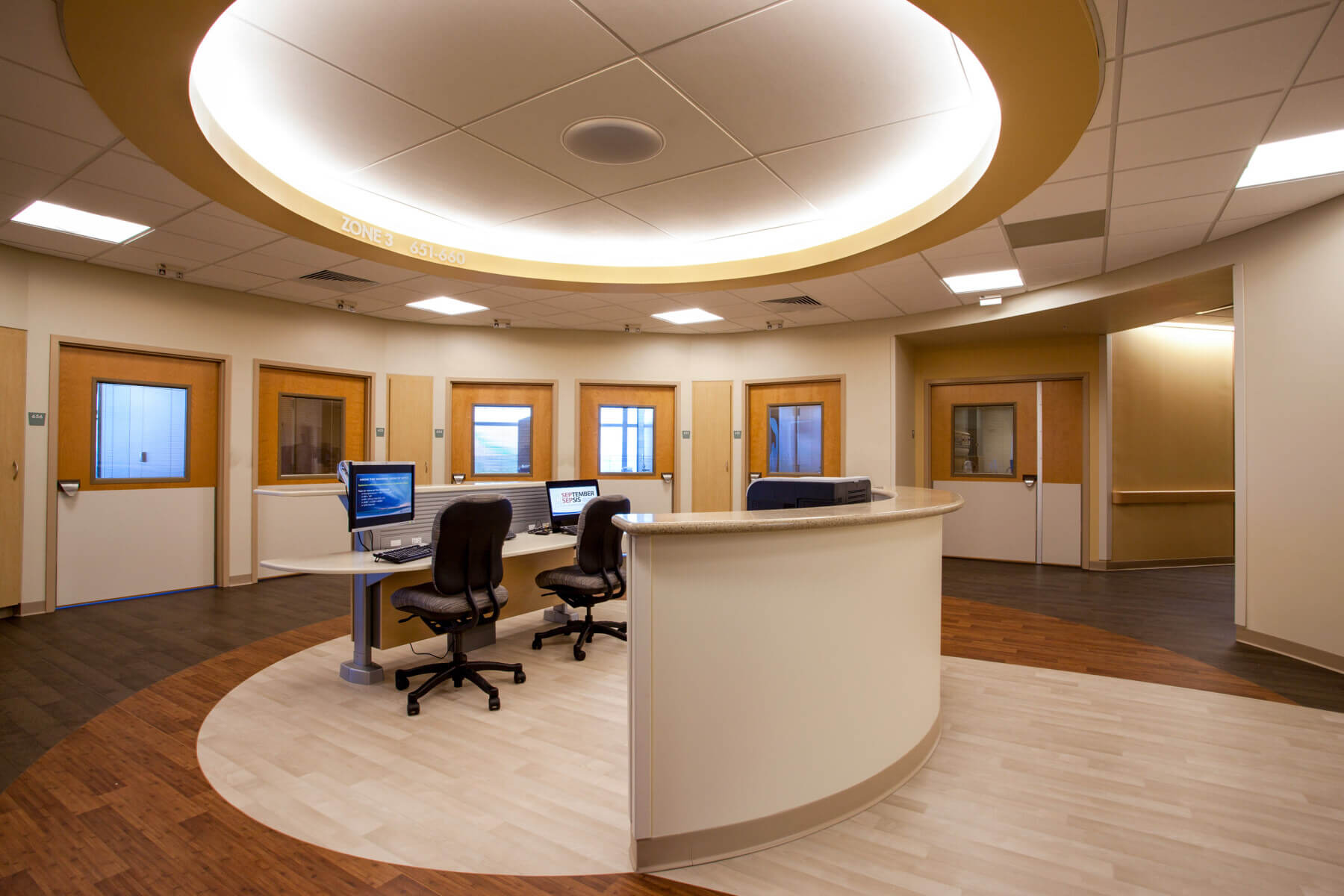The basic architecture for the new sixth-floor location was determined years before during initial construction, so options for altering the floorplan were limited. As the project began, however, Gresham Smith and hospital administrators questioned whether the high visibility of patient beds from outside the rooms was negatively impacting patient satisfaction scores. HCAHPS surveys indicated that noise levels sometimes disrupted patients’ sleep, and hospital leadership wondered whether the ability to monitor patients from outside the room resulted in less in-room engagement. Due to the lack of a continuous leaning edge between the bed and the toilet room, questions were also raised about the impact on patient fall rates.
After an exhaustive review of existing research, Gresham Smith suggested that flipping the beds to the opposite wall might alleviate each of the concerns that had been raised. Because many of the studies and whitepapers reviewed were inconclusive, however, the team also proposed a study to determine how the change would affect the acoustics of patient rooms, the amount of time staff spent in the rooms, and patient behavior, satisfaction and fall rates.
We noted observations and took measurements in the fifth floor space for nine months prior to the move and again for nine months in the new sixth floor space after the build-out and relocation. At the end of the study, we found that noise levels in the new layout were lower, hospital staff were observed in patient rooms more frequently, and patient ratings of the hospital overall had increased. The study also found a slight increase in fall rates.
While not a silver bullet, the study revealed a natural tension between staff’s ability to keep a constant watch on each patient and the patient’s ability to rest and recuperate in privacy. Creating a safe and comfortable healing environment requires designers and facility operators to strike a balance between privacy and visibility.
